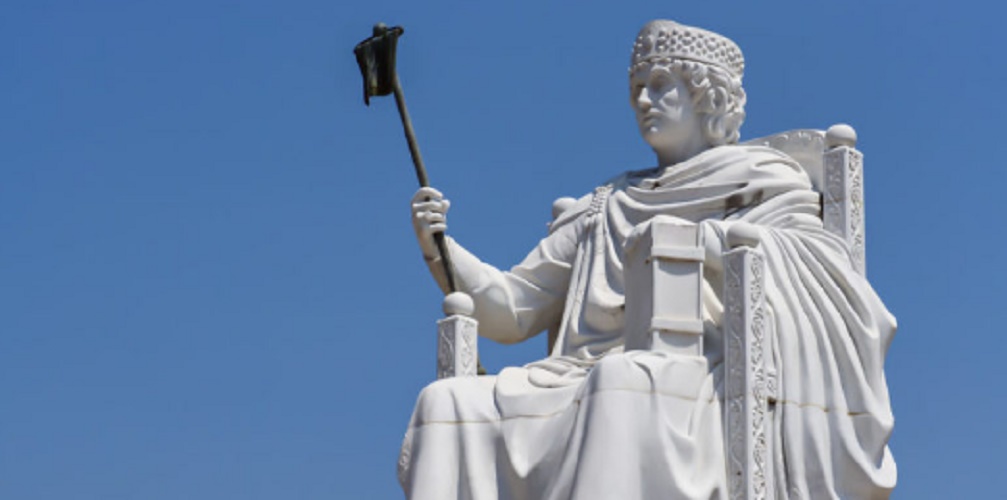What is Roman law?
We explain what Roman Law is, its history and in what periods it is divided. In addition, what are its sources, characteristics and importance.
-
What is Roman law?
Roman Law is called the legal system that governed the society of Ancient Rome , from its foundation (in 753 BC) until the fall of the Empire in the 5th century AD. C., although it remained in use in the Eastern Roman Empire (Byzantium) until 1453.
It was compiled as a whole in the 6th century by the Byzantine emperor Justiniano I, in a volume of laws known as the Corpus Iuris Civilis (“Civil Law Corps”), and first printed by Godion’s Dionysus in 1583, in Geneva .
This text and the laws it contains are of utmost importance in the legal history of mankind , as they served as the basis for the legal texts of multiple other cultures and civilizations. So much so that there is still a branch of law specialized in its study, called Romanesque, with offices in the law faculties of many countries.
To fully understand Roman Law, it is convenient to examine its characteristics and its history, but in broad strokes it can be understood from the concept of ius (“right”), as opposed to fas (“divine will”), thus separating for the first time Legal exercise of religion . This will allow the emergence of the various branches of law : ius civile (“civil law”), ius naturale (“natural law”), etc., many of which still remain today.
-
History of Roman Law

The history of Roman law encompasses more than a thousand years of legislation and changes in the way of understanding law and legality , since the first appearance of the Law of the Twelve Tables in 439 a. C. approximately, until the Justinian Code of 529 AD. C. Its birth comes from custom (which would inspire customary law) and would emerge as a model of regulation of society that would guarantee social peace against the equal desires of commoners and the hierarchy that sustained emperors, praetors and to the Senate.
Recall that the Roman Republic oscillated between democracy and dictatorship constantly, to end up becoming an Empire that would conquer almost the entire western world, taking its law to every corner it colonized. Thus, Roman law became the support of the legality of the Roman colonies in Europe , Asia and Africa, and this is reflected in the legal history of each kingdom in which the Roman Empire was divided after its collapse.
Some of the leading jurists and law scholars in Ancient Rome were Gayo, Papiniano, Ulpiano, Modestino and Paulo.
-
Periods of Roman Law
The history of Roman law is normally divided into the following periods:
- The monarchical period. It extends from the middle of the 8th century BC. C., with the foundation of Rome, until 509 a. C. when King Tarquinio the Superb is expelled from the city , whose despotic government was the last exercised by the Roman kings, thus giving rise to the Roman Republic.
- The republican period. It begins with the fall of the monarchy at the beginning of the 5th century BC. C. and culminates in the granting by the Roman Senate of absolute powers to Octavio Augusto in the year 27 a. C. During this period the Law of the XII Tables is published, formally initiating Roman law, and building a State of powers in balance: a group of democratically elected magistrates in popular assemblies, in charge of assigned functions; while the Senate was responsible for issuing senate consultations with the rank of law.
- The period of the principality. It begins in the year 27 a. C. after the political crisis that affected the Republic and allowed the emergence of an authoritarian State, subject to the will of the Prince or Emperor auctoritas, such as Augustus (27 BC – 14 AD), Caligula ( 37-41 AD), Nero (54-68 AD) among others. Rome reached its maximum territorial extension in this period: 5 million square kilometers.
- The period of domination. Also known as the absolute Empire, it begins in the middle of the second century AD. C. until the year 476, when the Western Roman Empire collapses and disappears. It is a time of absolute power the State, in the hands of the Emperor, who governs through imperial constitutions. In the year 380 the Empire assumes Christianity as an official religion and is subsequently divided into two parts, from which the Eastern Roman Empire will be born.
- The Justinian period. Also called the Government of Justinian, it goes from 527 to 565 AD. C., and it is the time when the Justinian compilation of Roman Law was published in 549, marking the end point of its history. After the death of Justinian, the Byzantine Empire is erected, a rather medieval state, which will last until the fifteenth century, when it falls in front of the Turks.
-
Sources of Roman Law

Like all aspects of law, the Roman has its sources, which we can study separately as follows:
The mos maiorum. “The custom of the ancestors” is the first of the sources of Roman law. It is made up of custom (customary law), through a set of rules inherited from the ancestral tradition and which were venerated in Ancient Rome, which were transmitted familiarly and that served to counter Roman to Hellenizing or Asian traditions .
Justinian sources. Those compiled by Emperor Justinian I in his work Corpus iuris civilis, which includes: The code or Codex (vetus) that compiled the imperial constitutions; The digest or Pandectas that contains a chronological arrangement of the various subjects, in chronological order throughout 50 different books; the Institutions or Institutes that contain a synthesis of doctrines and precepts in four books that make up an elementary treaty of law; The Justinian code or “The New Code” which is the version commissioned by the Emperor to Juan de Cappadocia, inspired by all the above; and finally the Novels that make up the definitive code promulgated by Justinian.
Extrajustinian sources. They cover two sets of texts outside the work of Justinian:
- Fragments of jurists of the classical period. As are the institutions of Gaius; the Fragments of Sententiarium libri V ad filium de Paulo; the Tituli ex corpore Ulpiani whose author is unknown; very few parts of the Papianian Responsibility; an appendix of Ars grammatica de Dositheus; and the Scholia sinaitica discovered on Mount Sinai.
- The collection of other imperial constitutions. Like the Vatican Fragment, which are the remains of a private collection of passages of classical jurists and imperial laws found in a palimpsest in the Vatican Library.
-
Characteristics of Roman law

Roman law, broadly speaking, distinguished between various ways of understanding the law . Not only, as has been said, between the ius (“right”) and the fas (“divine will”), but also between public law , which regulates the actions of the State and ensures the general welfare of citizens ; and private law , which regulates the agreements and transactions between them, in view of the idea of justice defended by the institutions.
Similarly, it differed between two fundamental concepts: Ius (“right”), that which is fair and equitable in itself and therefore binding ; and Lex (“Law”), that ordered or commanded in writing by the State authorities. The entire body of Roman Law was inspired by such opposition.
We must also note that for Roman Law the human being was not necessarily a citizen, but those who the law recognized as such, being slaves excluded from any right. There were, thus, three forms of citizenship based on their degree of freedom :
- Free people. Those who were always (Naive) and those who had gained their freedom after being slaves (Libertines).
- Colonists. They were in an intermediate state between freedom and slavery , sentenced perpetually to the cultivation of Roman territories, and whose defection became slaves.
- Slaves. People who did not own, but were part of the assets of others.
Although they were not at the level of slaves or settlers, women in this legal system occupied a place of subalternity regarding men.
-
Importance of Roman law
Roman law is not only the basis of the constitutions of the countries of the West and East (especially its civil and commercial law) that were part of the Roman colonial Empire, but also gave rise to the statutes of the Catholic Church that governed its operation even in the Middle Ages, when the Roman Empire had already dissolved.
Almost all republican institutions that exist today have their origin in Roman law, and many ordinances such as the common law Anglo-Saxon as well.





